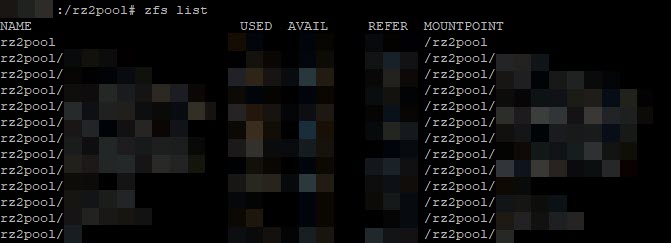So my Silverstone DS-380 casing’s power LED seems to have bought it… In an attempt to try fix it (or at least test it), I had to get to the motherboard and that meant I had to remove all the drives, drive cage, etc… Since piecing everything back together again was a pain, I left the 3.5″ spinning media drives out to boot the system several times during testing.
After giving up on the power LED, I re-plugged in everything + the drives… Only to find that, of some 11 different ZFS sub pools, 10 were missing…
My heart stopped and the universe whirled around me…
zpool status showed the drives were all present and accounted for…
Thankfully, zfs list showed all my ZFS sub pools/”partitions” were still there… So, what gives?

